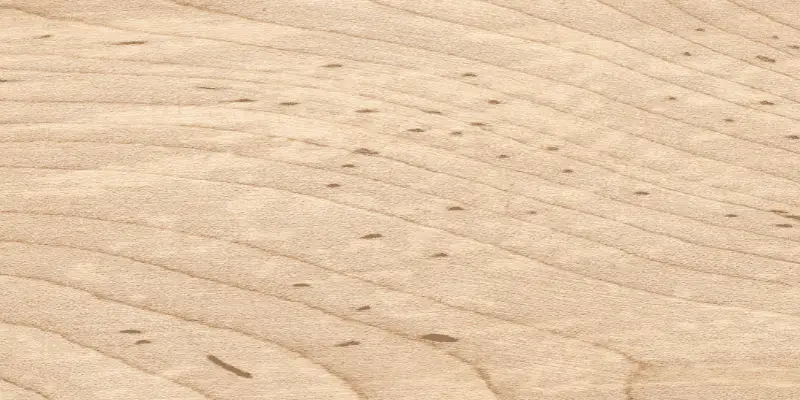Hard maple is denser and has a lighter color, while soft maple is less dense and has a slightly darker hue. Both types of maple possess unique qualities that make them suitable for different woodworking projects.
Hard maple is prized for its durability and strength, making it ideal for flooring and furniture, while soft maple’s workability and affordability make it a popular choice for cabinets and millwork. Understanding the distinctions between hard and soft maple is crucial for selecting the right wood for your project.
This article will explore the attributes of hard and soft maple, their applications, and the considerations to keep in mind when choosing between the two. Whether you’re a professional woodworker or a DIY enthusiast, this guide will help you make an informed decision when working with maple wood.
Understanding The Different Types Of Maple Wood
Hard maple, also known as sugar maple, is a popular choice for furniture and flooring due to its durability and distinctive appearance. It is known for its dense, strong nature, making it resistant to wear and tear. The grain pattern of hard maple is generally tight and uniform, with small pores that give it a smooth finish when properly sanded and finished. The color of hard maple wood ranges from pale cream to light reddish-brown, offering an attractive natural luster when polished.
Soft maple, also referred to as red maple or silver maple, is a more affordable alternative to hard maple. While it is not as hard or dense, it is still suitable for various woodworking applications. Soft maple grain texture tends to be fine and even, allowing for good workability. The color of soft maple can vary from creamy white to pale reddish-brown, often displaying a subtle figure when finished. Unlike hard maple, soft maple may have larger pores, which can require additional care and attention during finishing.
Strength And Durability: How Hard And Soft Maple Compare
When choosing between hard and soft maple for your woodworking projects, understanding the differences in strength and durability is crucial. Each type of maple has distinct qualities that make them suitable for different applications. Let’s take a closer look at how hard and soft maple compare in terms of strength and durability.
Hard Maple’s Strength And Durability
Hard maple, also known as sugar maple, is renowned for its exceptional strength and durability. The wood’s dense grain structure and high resistance to wear and tear make it a popular choice for flooring, furniture, and other high-traffic applications. Hard maple stands up well to heavy use and is less prone to dents and scratches, making it an ideal option for long-lasting, durable projects.
- Strength and density are key characteristics of hard maple.
- High resistance to wear and tear makes it suitable for high-traffic areas.
- Less prone to dents and scratches, ensuring long-lasting durability.
Soft Maple’s Strength And Durability
Although soft maple may not be as hard as its counterpart, it possesses its own unique strengths. Despite its name, soft maple still offers respectable durability and is often utilized in various woodworking applications. While it may not be as resilient to heavy use as hard maple, its flexibility and workability make it well-suited for intricate designs and projects that require shaping and carving.
- Respectable durability and flexibility contribute to soft maple’s appeal.
- Well-suited for intricate designs and projects requiring shaping and carving.
- Offers its own unique strengths despite being softer than hard maple.
Best Uses For Hard Maple Vs Soft Maple
When it comes to woodworking, choosing the right type of wood is crucial to the success of your project. Hard maple and soft maple are popular choices, each with unique characteristics that make them suitable for different applications. Understanding the best uses for hard maple versus soft maple can help you make an informed decision when selecting wood for your project.
Hard Maple’s Ideal Wood Projects
Hard maple is known for its durability and strength, making it an excellent choice for projects that require a tough and durable wood. Its fine, consistent grain and light, creamy color make it ideal for furniture making, such as tables, chairs, and cabinets. Hard maple’s density also makes it a favorite for butcher blocks and workbench tops, as it can withstand heavy use and resist wear and tear.
Soft Maple’s Ideal Wood Projects
Soft maple, while still relatively strong, is more commonly used for projects that require a softer and more workable wood. Its flexibility and ease of working make it a great option for carving, turnery, and intricate molding. Soft maple’s lighter color and close grain pattern also make it a popular choice for millwork, paneling, and decorative accents.

Factors To Consider When Choosing Between Hard And Soft Maple
When considering the choice between hard and soft maple for your woodworking project, several important factors should be taken into account. Each type of maple has its own unique characteristics and benefits, making it essential to weigh various considerations before making a decision.
Grain Patterns And Color Variations
Hard maple, known for its fine, uniform texture and light creamy color, often features a closed grain pattern. On the other hand, soft maple, with its slightly coarser texture, presents a more pronounced and varied grain pattern that ranges from straight to wavy or curly. While both types can be stained to achieve a desired hue, the distinct grain patterns and color differences can significantly impact the overall appearance and aesthetic appeal of your finished project.
Cost And Availability
When it comes to cost and availability, hard maple tends to be more expensive and less abundant than soft maple. This is due in part to the fact that hard maple is a denser and harder species, making it preferable for specific applications such as flooring and furniture manufacturing. Conversely, soft maple is more readily available and generally more budget-friendly, making it an excellent choice for a wide range of woodworking projects.
By focusing on the distinct qualities of hard and soft maple and outlining the key factors to consider when choosing between them, this blog post section provides valuable insights for woodworkers and enthusiasts. The H3 headings, grain patterns and color variations and cost and availability, effectively segment the information, making it easily scannable for readers. The use of the HTML syntax ensures the content is structured for optimal presentation on WordPress while maintaining a clean and engaging format.
Frequently Asked Questions On Hard Vs Soft Maple
What Are The Main Differences Between Hard And Soft Maple?
Hard maple is denser and has a higher shock resistance compared to soft maple, making it more suitable for flooring and furniture. Soft maple, on the other hand, is more affordable and workable, often used for cabinets and millwork.
Are Hard Maple And Soft Maple Similar In Appearance?
Both hard and soft maple share a similar pale white to reddish-brown color and fine, uniform texture, making them popular choices for various woodworking projects including furniture, flooring, and cabinetry.
Can I Stain Hard Maple And Soft Maple In The Same Way?
Even though both types of maple can be stained, hard maple tends to absorb stain unevenly due to its dense grain, while soft maple, being less dense, takes stain more evenly. It’s recommended to use a pre-stain conditioner before staining hard maple to achieve a uniform finish.
Conclusion
Ultimately, the choice between hard and soft maple comes down to personal preferences and project requirements. Both types of wood have their unique strengths and characteristics, making them suitable for different applications. By understanding the differences and benefits of each, you can make an informed decision that best suits your needs and goals.



One thought on “Hard Vs Soft Maple: Deciding the Best Choice for Your Wood Projects”